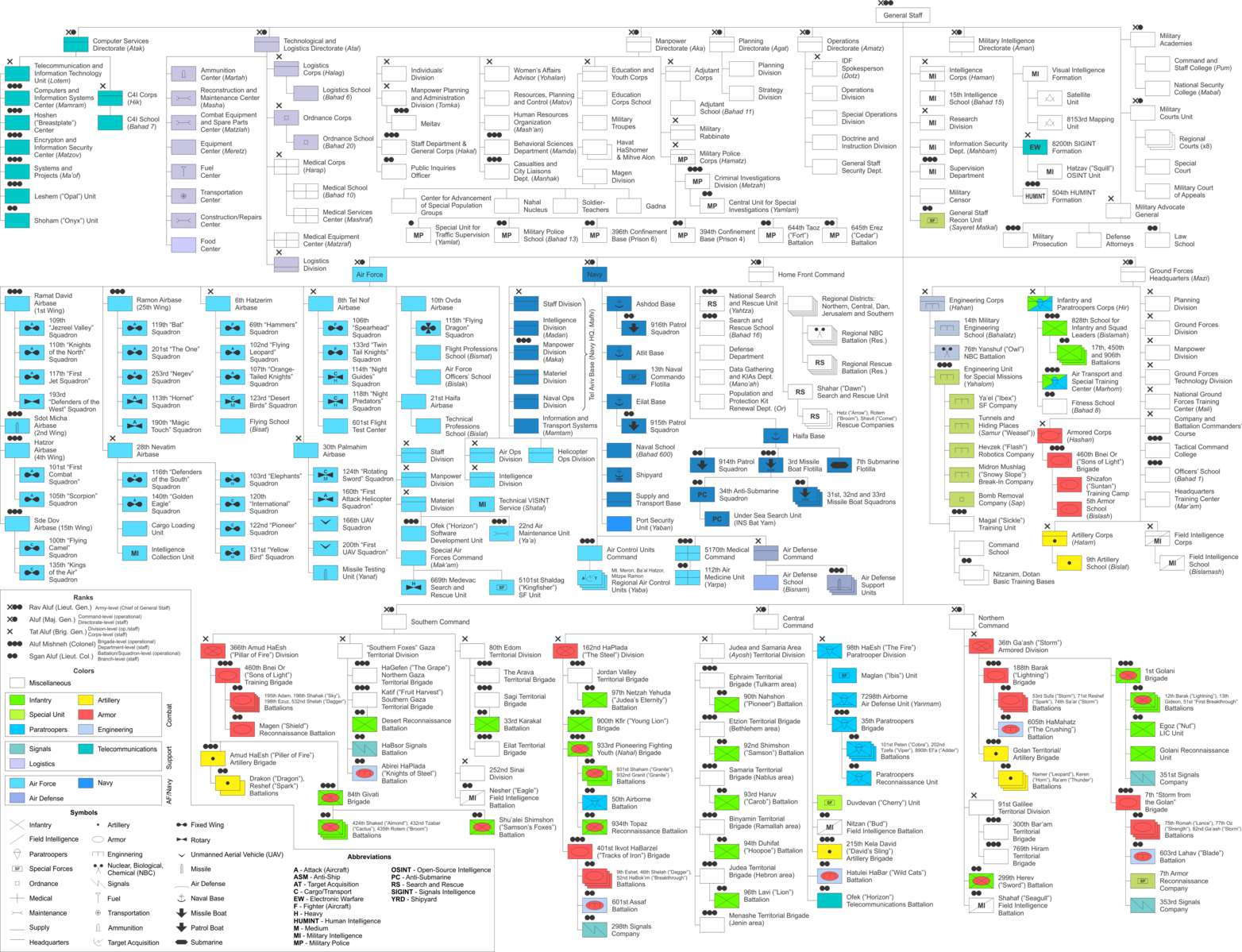The Israel Defense Forces (IDF; Hebrew: צְבָא הַהֲגָנָה לְיִשְׂרָאֵל Tsva ha-Hagana le-Yisra'el; lit. 'The Army of Defense for Israel'), commonly referred to by the Hebrew-language acronym Tzahal (צה״ל), are the combined military forces of the State of Israel, consisting of three branches: the Israeli Ground Forces, the Israeli Air Force, and the Israeli Navy. It is the sole military wing within the Israeli security forces, and has no civilian jurisdiction within Israel. The IDF is headed by the Chief of the General Staff, who is subordinate to the Israeli Defense Minister.
An order from David Ben-Gurion on 26 May 1948 officially set up the IDF as a conscript army formed from the ranks of the Haganah, Irgun, and Lehi paramilitary organizations of the Yishuv. The IDF has participated in all of the armed conflicts involving Israel since its independence.
The IDF is unique amongst the militaries of the world due to its regulated conscription of women since its formation. It is one of the most prominent institutions in Israeli society due to its influence on the country's economy, culture, and political scene. The IDF uses several technologies developed within Israel, with many of them made specifically to cater to its needs in its operational environment in the Levant, such as the Merkava main battle tank, the Achzarit armored personnel carrier, the Iron Dome air defense system, the Trophy active protection system for vehicles, and the Galil and Tavor assault rifles. The Uzi submachine gun is an Israeli invention and was used by the IDF until December 2003, ending a service that began in 1954. Since 1967, the IDF has had close military relations with the United States, including in development cooperation, such as on the F-15I jet, the THEL laser defense system, and the Arrow missile defense system.
The IDF is believed to have had an operational nuclear weapons capability since 1967, possibly possessing between 80 and 400 nuclear warheads, with its delivery systems forming a nuclear triad of plane-launched missiles, Jericho III intercontinental ballistic missiles, and submarine-launched cruise missiles
